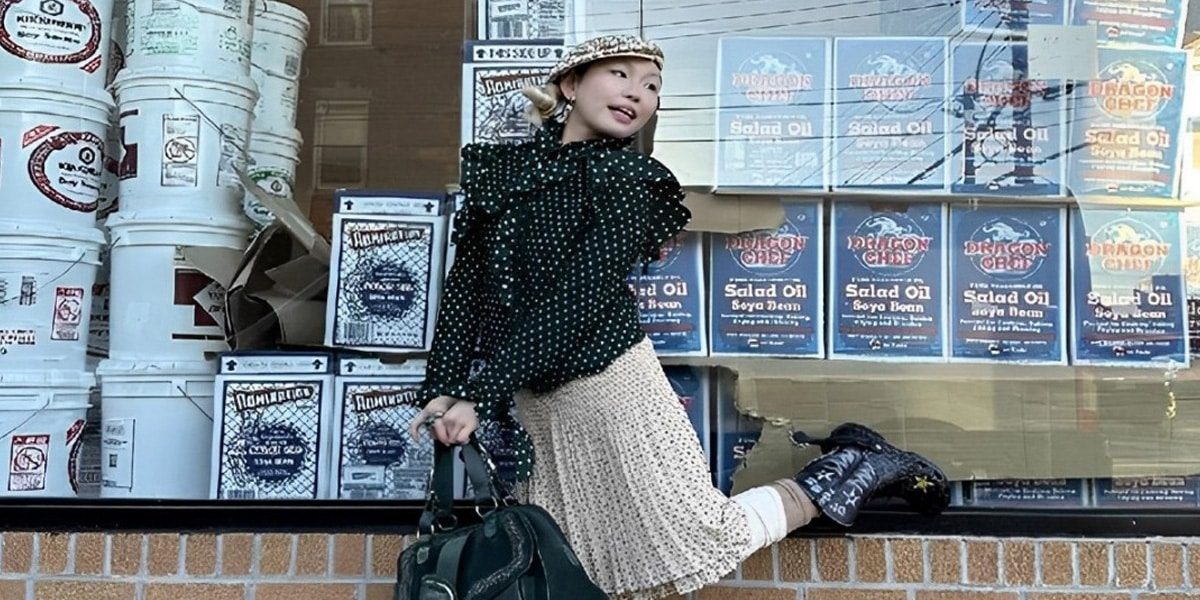By:Anne Schulze
In New York, a city where countless dreams intersect, Jiayi Che is using her unique fashion concept to open up a design path that combines retro and modern design. From a young age, she harbored a deep interest in styling and handicrafts, seemingly predestining her artistic path. Jiayi is not only a designer of clothing but also an explorer of fashion history and culture. In her world, every stitch and thread tells a story; each garment is a vessel of time.
Jiayi Che, who cherished styling and handicrafts from an early age, began her inseparable bond with fashion as a child. Throughout her growth, she transformed this hobby into a passion for clothing design, eventually making it the core of her career. Her education at Parsons School of Design in New York provided her with a solid foundation in art and technique, also igniting her enthusiasm for women’s ready-to-wear design.
Jiayi Che’s design philosophy is deeply influenced by her love for vintage fashion and fashion history. She has not only amassed a considerable collection of vintage garments but has also conducted in-depth academic research on these clothes. Her designs often present a modern interpretation of historical garment patterns, showing not just respect for the past but also her ability to blend traditional aesthetics with modern sensibilities.

In Jiayi’s creations, each needle and thread encapsulates a story. In her “Marginalia” series, Jiayi Che reinterprets Western historical clothing from the late Middle Ages to the Renaissance, displaying her profound understanding of and creativity in fashion history. Her designs juxtapose chaos with elegance, tradition with modernity, offering a visual and emotional feast. Her work is not just an expression of fashion but also an exploration of personal identity and self-expression. The core of the “Marginalia” series is a unique realm constructed by Jiayi Che – her “Garden of Earthly Delights.” Here, the characters she meticulously designs come to life, each challenging norms of female and historical fashion. This series is a symphony of diversity, weaving multicultural elements into the fabric of each piece, symbolizing her journey of self-exploration and challenge to conformity.

During her years in New York, Jiayi Che collaborated with numerous independent visual artists and participated in various visual planning projects in the clothing industry. These experiences not only enriched her artistic perspective but also prompted her to think deeply about the interaction between fashion and other art forms. Furthermore, her works have been published in renowned fashion magazines like Vogue China, Harper’s Bazaar, and Pap Magazine, each appearance being an acknowledgment of her talent and a challenge to the fashion industry.
Currently, Jiayi is dedicated to developing her personal brand, marking not just a new stage in her career but also a comprehensive display of her personal style. Through this brand, she hopes to elevate the fusion of vintage and modern to a new level, not only in design but also in the culture and philosophy of the brand.
In Jiayi Che’s fashion narrative, we see a challenge to tradition, an exploration of self-expression, and a passion for art. Her designs are not just garments but vivid stories, narrating dialogues between the past and present, showcasing the endless possibilities of individuality and fashion. In Jiayi Che’s world, fashion is more than just clothes worn on the body; it is a carrier of personal stories and cultural identity, a bridge connecting the past and the future.
Published by: Aly Cinco



















